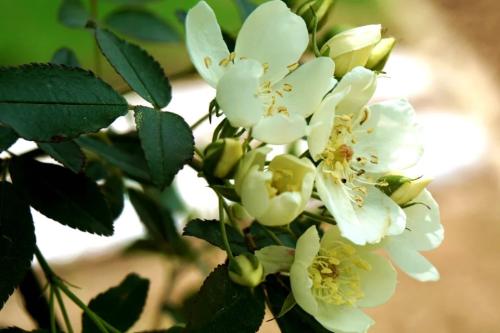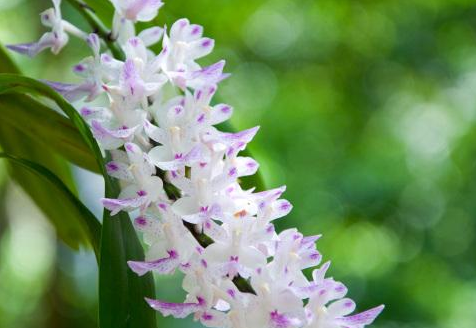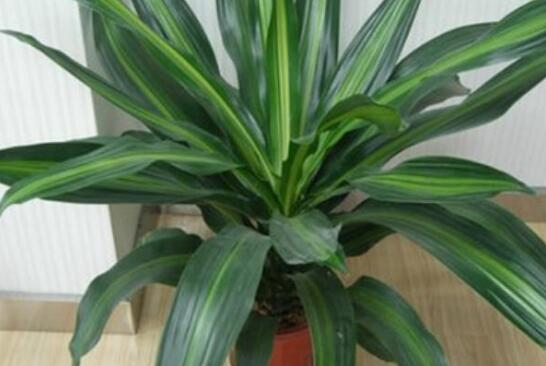Maintenance methods of Cymbidium chinense
1. Temperature and light
Qianlixiang is not resistant to cold, so you should pay attention to keep it warm in winter, otherwise the leaves will fall. And Qianlixiang likes the sun, so make sure there is enough light, but you can't expose it in summer, otherwise Qianlixiang will be burned.
2. Moisture
Because Qianlixiang likes a warm and humid environment, so Qianlixiang should be watered in time to prevent it from dying of drought, but it can't be watered more, otherwise it is easy to rot the roots.
3. Fertilization
Fertilize Qianlixiang regularly, about every half a month during the growing period.
4. Pruning
It should be pruned regularly to keep the plant shape beautiful and promote the growth of Qianlixiang.
5. Disease and insect nuisance
Qianlixiang is prone to pests and viruses. Insecticides can be sprayed when pests appear. If there is a virus, diseased branches can be cut off.

Well, the above is the content of the editor today. I believe that after the introduction of the editor, you will have some understanding of the flower language of Qianlixiang. I also hope that the breeding method of Qianlixiang supplemented by the editor will help you. Thank you for your reading!
The culture method of Qili incense alias: tangerine, Shilixiang, stone pine English name Common jasmin orange scientific name Murraya paniculata, belongs to Rutaceae, Citrus, evergreen shrub. It has many branches, mutual leaves, white flowers and strong aroma. It is said that the fragrance can still be heard from seven miles away, so it is called "Qili incense". But in fact, there is no plant officially named Qilixiang at present. Qilixiang is born in the foothills of low elevations, with a height of about 1 to 4 meters. Dense branches and leaves are the most common hedge plants, symbolized by odd-pinnate compound leaves, Obovate or ovate-oval. There is a strong floral flavor, flowering in summer and autumn. The fruit will bear fruit after flowering, the fruit is ovate or oval, and the fruit is green at the beginning and red after ripening. The breeding time is the most suitable for spring and autumn, and can be softened with a practical stick of ripe fruit to separate the pulp. Rinse with clean water to let him drop the remaining seeds and dry them in the shade. The cultivation focus is the fertile sandy loam, and the sunshine must be full of branches and leaves to flourish. During the growth period, one natural organic fertilizer or chemical fertilizer is applied every season. Spring is the suitable period for pruning and shaping of hedgerows, and branches and leaves can be pruned at any time if they grow too fast. Qilixiang likes hot and humid weather, with a temperature of about 22 degrees Celsius. Culture methods and matters needing attention of Cymbidium chinense
The famous Qianlixiang wonton in Shanghai is famous because it is related to Qianlixiang. Qianlixiang, also known as Qilixiang, is a small evergreen tree plant. The flowers of Qilixiang are white and beautiful, while Qianlixiang is called Qianlixiang because of its strong and lasting fragrance. Qili incense is produced in Hunan, Fujian and other regions, are rich in spices, it can be seen that Qili incense is also one of the famous spices. Today we will introduce to you the breeding methods and matters needing attention of Xia Qi Li Xiang.
Culture methods and matters needing attention of Cymbidium chinense
First, the culture method of Qiliang-- sprouting.
If you want to raise Qili incense well, you must first speed up the budding. when you accelerate the germination, you can soak the seeds in warm water for half a day to one day, and the seeds will absorb water and expand in a warm environment. At this time, it will be easier for the seeds to germinate, and the chances of survival will be improved a lot.
Second, the culture method of Qili incense-- sowing.
The seeds of Qilixiang are small, so you can stick the seeds with toothpicks and attach them to the matrix soil one by one.
Third, the culture method of Qili incense-- conservation.
If you encounter low temperature after sowing, the flowerpot should be covered with plastic film in time, which is more conducive to moisturizing and heat preservation. Qili incense should be exposed to the sun after emergence, which will make the growth of the seedlings stronger, and at the same time, some diseased seedlings and unhealthy seedlings should be removed reasonably.
- Prev

Culture method of fingernail orchid
1. The soil generally chooses the loose and breathable substrate, which can be mixed with rotten leaf soil, bark or charcoal river sand. two。 Potted fingernail orchid needs sufficient scattered light, which can be exposed to two or three hours of light in the early morning, or put the plant under the tree for cultivation, which is more conducive to plant flowering. 3. Temperature fingernail orchid prefers warmth
- Next

III. Brazilian iron tree planting precautions
1. Fertilization Brazil iron tree has no excessive requirements for fertilizer. During the growth period of young plants, thin liquid fertilizer is needed once every half month. After a little bigger, fertilizer can be applied once every two months. Excessive nitrogen fertilizer cannot be applied, mainly phosphorus and potassium fertilizer. 2, leaf color leaf surface normal temperature and humidity should be green
Related
- Fuxing push coffee new agricultural production and marketing class: lack of small-scale processing plants
- Jujube rice field leisure farm deep ploughing Yilan for five years to create a space for organic food and play
- Nongyu Farm-A trial of organic papaya for brave women with advanced technology
- Four points for attention in the prevention and control of diseases and insect pests of edible fungi
- How to add nutrient solution to Edible Fungi
- Is there any good way to control edible fungus mites?
- Open Inoculation Technology of Edible Fungi
- Is there any clever way to use fertilizer for edible fungus in winter?
- What agents are used to kill the pathogens of edible fungi in the mushroom shed?
- Rapid drying of Edible Fungi

